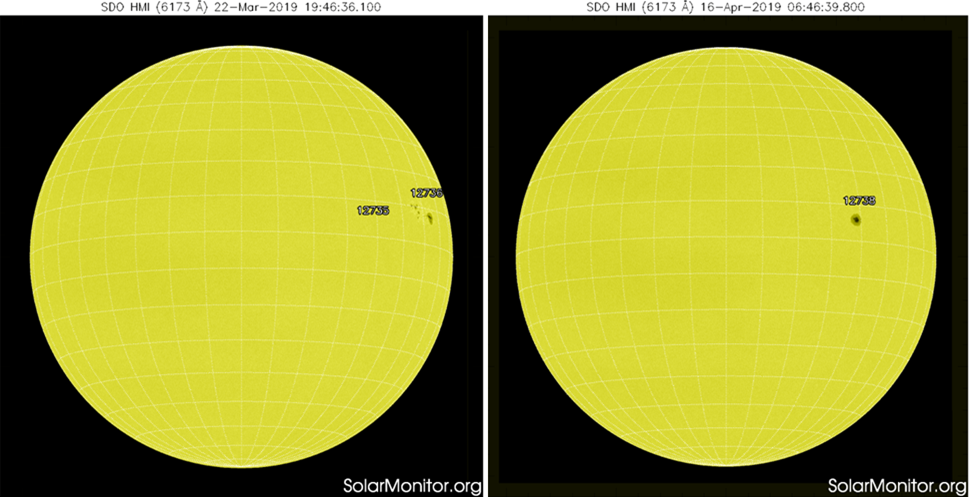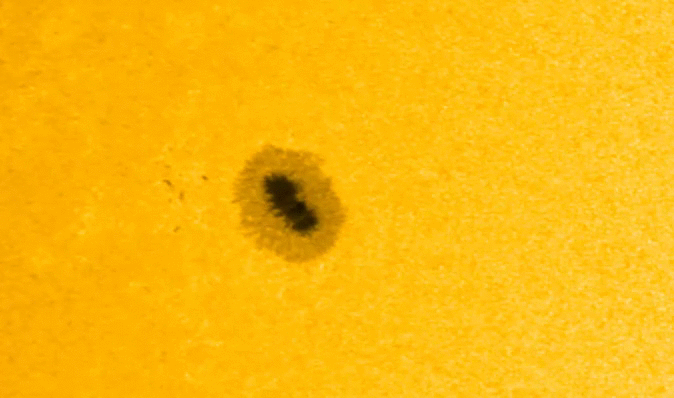Active region NOAA 2738 rotated over the Sun's east limb as a single big sunspot on 7 April. It was probably the return of NOAA 2736 which had rounded the west limb just 2 weeks earlier as a rather complex and flaring region. NOAA 2738 seems to be the remainder of this group, i.e. the main leading spot. Underneath two white light images from SDO/HMI showing active regions NOAA 2736 on the left and NOAA 2738 on the right, almost a solar rotation later.

NOAA 2738 was not very flare active, restricting itself to B-class flares. In white light imagery (SDO/HMI), one can observe fine, slowly moving bright structures that are overlaying the umbra (dark core of the sunspot). These are called light bridges and usually herald the decaying phase of the spot. Nonetheless, over the last week, this sunspot did not fragment or become much smaller. In fact the spot was near naked-eye visibility (using solar eclipse glasses!) all week. The light bridges and changing appearance of the sunspot are well visible in the imagery underneath (11-13-15 April).


The close-ups underneath show a combination of SDO/HMI and SDO/AIA 171 pictures (using the JHelioviewer software), bringing white light (WL) and extreme ultraviolet (EUV) images together. We can observe the shape of the magnetic fields above the sun's surface because the magnetic field lines guide the motion of the heated plasma (charged particles) that are present, hence the otherwise invisible magnetic loops and towers of material in the corona glow brightly in EUV images. The dynamics of the magnetic field lines over the sunspot are obvious. Some minor flaring can be observed too. The images cover the period from 10 to 16 April at a 1 hour cadence (top), and from 12 April (18UT) to 13 April (18UT) at a 10 minute cadence. The middle image has the WL and EUV image overlaid, whereas the bottom image compares them side by side.








